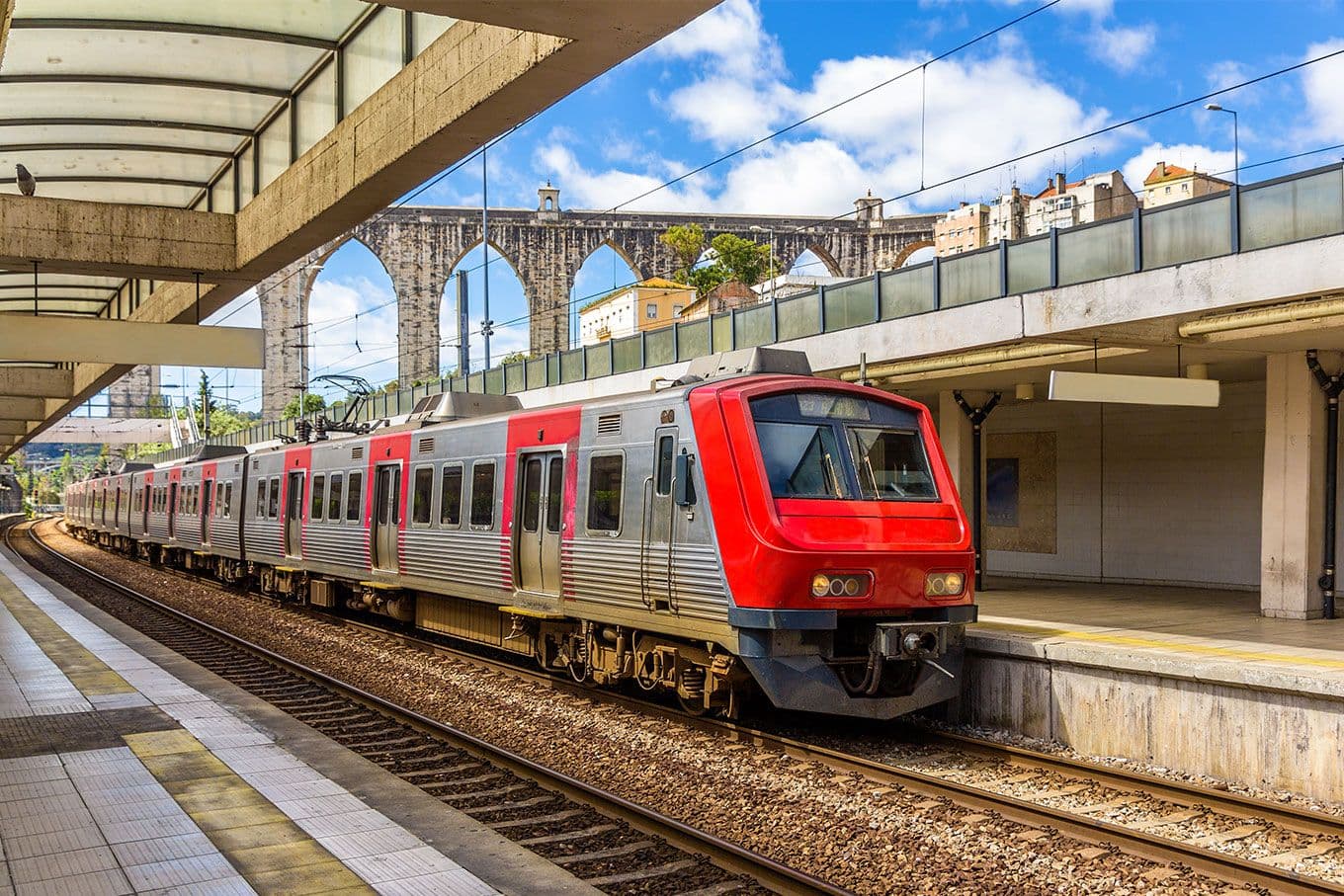
Uber, Bolt & Taxis: How to Move Around Efficiently
Between modern apps and local traditions, discover how to get around Portugal easily without wasting time or money.
Getting around Portugal has never been easier. Between traditional taxis, ride-hailing apps like Uber and Bolt, and local alternatives, the country offers a wide range of options to travel comfortably, whether you are a resident, tourist, or expat. But each solution has its advantages, fares, and particularities. Here’s a guide to understanding how to move around efficiently every day, from Lisbon to Porto, without stress.
Portuguese Taxis: Tradition and Reliability
Found in all major cities and most towns, Portuguese taxis remain a safe and accessible means of transport.
They are easy to recognize by their beige color or, in Lisbon, the traditional black and green combination. Fares are regulated by law, and a visible meter inside ensures transparency.
Taxis can be hailed in the street, found at dedicated taxi ranks, or booked via local apps like FreeNow.
Prices are generally reasonable: a ride within the city center usually costs between €5 and €10, while a trip to the airport is around €15 in Lisbon or Porto.
One of the main advantages of taxis in Portugal is their reliability: drivers know the city well, rules are clear, and rates are stable.
However, experiences can vary between cities: some drivers speak little English, and card payments are not always available, especially in smaller towns.
Uber: The Most Popular International Option
Arriving in Portugal in 2014, Uber quickly became a benchmark.
Present in major cities like Lisbon, Porto, Faro, and Coimbra, the app offers several service tiers, from the economical UberX to more comfortable options like Uber Green or Uber Comfort.
One of Uber’s biggest strengths is transparency: the price is known in advance, payment is made directly through the app, and customer support is responsive.
Users also appreciate the ability to rate drivers, which helps maintain an overall high level of service quality.
Prices are competitive: an average trip within Lisbon costs between €4 and €8, and a ride to the airport rarely exceeds €10 to €12.
It’s the most popular option among expats and tourists, particularly for its simplicity and multilingual interface.

Bolt: The Local and Fast Alternative
Bolt, originally from Estonia, is the other major ride-hailing app operating in Portugal.
Its success comes down to two main advantages: fares that are often cheaper than Uber’s and great availability, even outside city centers.
Bolt also offers other services, such as electric scooters and bikes in some cities.
The app works the same way: instant booking, driver geolocation, and payment through the platform.
Waiting times are generally short, especially in Lisbon and Porto, where the network is well established.
The main difference compared to Uber is price: Bolt is often 10 to 20% cheaper, but vehicle quality and ride experience can vary slightly.
It’s an excellent choice for short, quick, and affordable trips.
Quick Comparison: Efficiency and Comfort
All three options coexist harmoniously in Portugal.
Taxis remain the choice of many locals, especially older generations, while younger professionals and expats tend to prefer Uber and Bolt for their convenience.
In terms of price, Bolt is generally the cheapest, Uber slightly more expensive but more consistent, and taxis remain competitive for medium-distance rides.
When it comes to comfort, Uber often offers the best overall experience, closely followed by Bolt.
Taxis, however, maintain an advantage in smaller towns thanks to their wider availability and regulated service, without surge pricing during busy hours.
Tips for Getting Around Smoothly
To avoid surprises, a few simple tips:
- Always check the estimated fare before confirming a ride on Uber or Bolt.
- Avoid rush hours (8 a.m.–10 a.m. and 5 p.m.–7 p.m.) when prices can increase.
- Check whether the driver accepts card payments in a traditional taxi.
- And above all, compare prices between Uber and Bolt: they can differ by several euros depending on demand.
For intercity travel, it’s best to choose Rede Expressos or CP trains, which are usually more economical than long-distance private transfers.
Conclusion
Between taxis, Uber, and Bolt, Portugal has found a balance between tradition and modernity.
Taxis embody reliability and local knowledge, Uber offers international simplicity, and Bolt brings economic efficiency.
For both travellers and residents, urban mobility has never been so easy.
Getting around Lisbon or Porto is now a pleasure: fast, affordable, and perfectly suited to the Portuguese rhythm of life.
Share this article
Suggested articles

Transport Cards (Viva Viagem, Andante) Explained
Travelling in Portugal also means learning how to move smoothly through its transport systems. In both Lisbon and Porto, two main cards rule the urban networks: Viva Viagem and Andante. Both appear simple, yet they can be confusing for newcomers. Here’s a clear guide to help you understand how they work and avoid common day-to-day mistakes.

Long-Distance Buses: Rede Expressos, FlixBus and Other Companies
Travelling by bus in Portugal has become, in recent years, a true alternative to trains or cars. Between national routes and international companies, the network is dense, efficient, and often very affordable. Rede Expressos, FlixBus, Alsa, and CitiExpress crisscross the country from north to south and also connect major European capitals. Here’s a guide to understanding how these companies work and why they appeal so much to travellers and expats alike.

TAP Air Portugal : the national airline between tradition and modernity
Picture this: you’re boarding a plane painted in Portugal’s colors, bound for Lisbon or Porto, and your adventure is already beginning! Because yes, choosing Portugal’s national airline isn’t just about the flag on the tail, it’s also (and above all) about history, a touch of Portuguese charm, and some surprisingly good opportunities. Here’s my little tour of TAP Air Portugal what you should know, why it’s worth considering, and a few insider tips to keep handy!

Ferries and Boats: Crossings in Lisbon, Algarve and the Azores
Portugal isn’t discovered only by road or rail. Bordered by the Atlantic Ocean and crossed by majestic rivers, the country also offers an extensive network of ferries and maritime connections linking cities, beaches, and islands.

Tram 28 in Lisbon : useful or tourist trap?
Ah, Tram 28… that little yellow tram winding its way through Lisbon’s narrow streets, wooden cabin, squeaky brakes, sharp turns… I’m pretty sure you’ve already seen it (at least in a photo!). But here’s the real question : is it truly a must-do, or just another tourist cliché to tick off before moving on ? Let’s talk about it, the highlights, the “watch out” moments, and how to really make the most of it.

Traveling by Train with Comboios de Portugal : smart, comfy… and often cheaper than you’d think
You’ve had that moment, right ? The urge to escape routine, change scenery, hop on a train, and just arrive somewhere, gazing out the window instead of staring at a screen or gripping a steering wheel. Well, good news: if you’re in Portugal (or planning a sunny getaway), Comboios de Portugal (or CP for short) is your new best friend. Super practical, surprisingly affordable, and yes, I’ll show you how to make the most of it.


